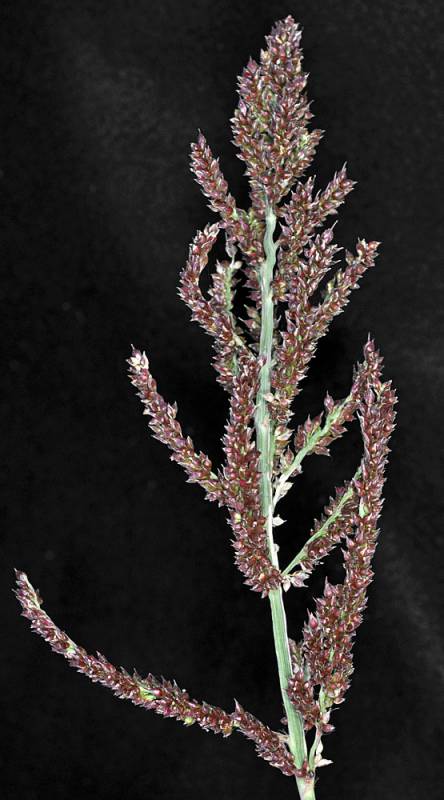Echinochloa crus-pavonis
Echinochloa crus-galli
guleaf barnyard-grass
barnyard grass, or large barnyard grass
Sheaths open, somewhat compressed;
ligules none;
blades flat, 4-16 mm. broad.
Inflorescence a stiff panicle, the branches spreading to erect, at least 3 cm. long;
spikelets subsessile, 3-4 mm. long, borne along one side of the panicle branches;
spikelets 2-flowered, the lower flower sterile;
glumes unequal, 3-nerved, unawned;
sterile lemma acuminate and awn-tipped, the awn sometimes up to 30 mm. long, about equal to the second glume, the palea membranous, about half as long as the lemma;
fertile lemma and palea acuminate, hardened, unawned;
stamens 3.
Echinochloa crus-pavonis
Echinochloa crus-galli
Occurring on both sides of the Cascades crest in Washington; British Columbia to California, east across most of North America to the Atlantic Coast.
- Local floras:
BC,
CA,
OR,
WA
- Local Web sites:
CalFlora,
CalPhotos,
Flora NW,
PNW Herbaria
WildflowerSearch
iNaturalist (observations)
USDA Plants Database
- LBJ Wildflower Center
- SEINet
- Plants of the World Online
- Encyclopedia of Life
- Wikipedia
- Google Image Search


